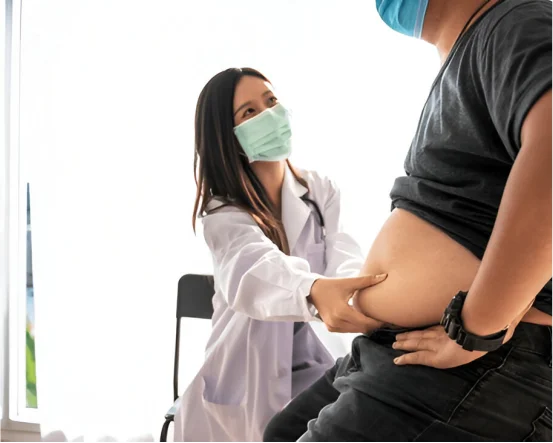Introduction
Tendons are the strong, fibrous tissues that connect muscles to bones and play a vital role in allowing movement and transmitting force. Whether lifting a heavy object or walking across a room, tendons are constantly at work, facilitating every muscular contraction. However, due to overuse, injuries, or degenerative conditions, tendons can tear, rupture, or become inflamed, causing pain, restricted motion, and loss of function. When conservative treatments such as physical therapy, rest, or medication fail to bring relief, tendon surgery may be necessary.
Tendon surgery is performed to repair or reconstruct damaged tendons, restore normal motion, and relieve pain. It is most commonly needed in the shoulders, knees, elbows, ankles, wrists, and hands. Depending on the extent of damage and the location of the tendon, the procedure can vary from minimally invasive techniques to complex reconstructive surgeries. This blog outlines the step-by-step process typically involved in tendon surgery procedure to help patients understand what to expect and how to prepare for it.
Tendon Surgery Procedure
- Preoperative Assessment and Imaging :- The process begins with a thorough clinical evaluation by an orthopedic or plastic surgeon. The surgeon will examine the affected area, assess the degree of tendon damage, and check for accompanying injuries such as nerve or joint issues. Diagnostic imaging like X-rays, ultrasound, or MRI scans are often performed to visualize the tendon and surrounding structures. These tests help determine whether the tendon is partially torn, completely ruptured, retracted, or degenerated. Blood tests may be ordered to check for underlying health conditions or infections. Based on these findings, the surgeon decides if surgery is necessary and discusses the risks, benefits, and expectations with the patient.
- Anesthesia and Surgical Preparation :- Once the patient is cleared for surgery, the next step is anesthesia. The type of anesthesia depends on the location of the tendon injury and the complexity of the procedure. For smaller tendons in the hand or wrist, local or regional anesthesia may be sufficient, while larger tendons in the knee or shoulder may require general anesthesia. The surgical site is then sterilized with antiseptic solutions, and a tourniquet may be applied in limb surgeries to reduce bleeding. Proper positioning of the patient on the operating table is crucial to give the surgeon optimal access to the tendon. Surgical drapes are placed to maintain a sterile field and prevent infection.
- Incision and Exposure of the Tendon :- The surgeon begins by making a precise incision over the area where the damaged tendon is located. The size and orientation of the incision depend on the extent of the injury and whether a traditional open technique or a minimally invasive approach is being used. Once the incision is made, the surgeon gently retracts the surrounding tissues to expose the injured tendon. In some cases, nearby nerves, blood vessels, or muscles must be carefully moved aside or protected during the procedure. Special magnification tools and lights may be used to enhance visibility, especially in delicate areas like the hand or foot.
- Tendon Repair or Reconstruction :- If the tendon is partially torn, the surgeon may trim frayed tissue and sew the ends together using strong, absorbable or non-absorbable sutures. For complete ruptures, the two tendon ends are aligned and reattached with specialized stitching techniques like the Krackow or Bunnell method. In cases where the tendon is severely damaged, degenerated, or retracted too far, a graft may be needed. The graft can be harvested from another tendon in the patient’s body (autograft) or from a donor (allograft). The graft is anchored into place using sutures, suture anchors, or bone tunnels depending on the joint involved. For tendon transfers, where a healthy tendon is redirected to take over the function of a damaged one, the surgeon detaches the donor tendon from its original insertion point and reattaches it to the affected area to restore motion.
- Reattachment to Bone or Muscle :- If the tendon has pulled away from the bone (a condition known as avulsion), the surgeon reattaches it using small anchors, screws, or sutures drilled into the bone. This is commonly seen in rotator cuff or biceps tendon repairs. In cases where the tendon has ruptured in the muscle belly or musculotendinous junction, reattachment is done using fine sutures that secure the tendon to the adjacent muscle fibers. Care is taken to align the tendon in its natural orientation to preserve muscle function and avoid abnormal movement patterns after healing.
- Closure and Dressing :- Once the tendon repair is complete and the area is checked for bleeding or complications, the surgeon begins closing the incision. Layered closure is used to stitch the deep tissues, subcutaneous fat, and finally the skin. Sterile strips, sutures, or surgical glue may be used depending on the wound’s location and tension. A sterile dressing or bandage is applied to protect the surgical site. In some cases, a splint, brace, or cast is placed to immobilize the joint and prevent tension on the newly repaired tendon. This helps promote healing and reduces the risk of re-injury during the early recovery phase.
- Postoperative Recovery and Rehabilitation :- After surgery, the patient is monitored in the recovery room until the effects of anesthesia wear off. Pain management is provided using medications and cold therapy to reduce swelling. Discharge may occur the same day or after a short hospital stay, depending on the procedure. Rehabilitation is a critical component of tendon surgery recovery. A physical therapist guides the patient through stages of healing: initial rest and protection, followed by gentle range-of-motion exercises, then gradual strengthening, and finally return to full activity. The timeline can vary widely hand tendon repairs may need 8 to 12 weeks, while Achilles or rotator cuff repairs may require several months. Patient compliance with therapy and follow-up visits is essential to ensure successful healing. The surgeon monitors tendon strength, joint flexibility, scar formation, and signs of complications like infection, stiffness, or re-rupture.
Conclusion
Tendon surgery is a meticulously planned and executed procedure that restores movement, reduces pain, and improves quality of life for individuals suffering from tendon injuries or chronic degeneration. From diagnosis and imaging to precise surgical repair and post-operative rehabilitation, every step plays a crucial role in the patient’s recovery. While the surgery itself is important, long-term success often depends on dedicated physical therapy, patience, and proper self-care. Whether it’s a rotator cuff tear, Achilles rupture, or hand tendon injury, understanding the process helps patients make informed decisions and approach their healing journey with confidence.























